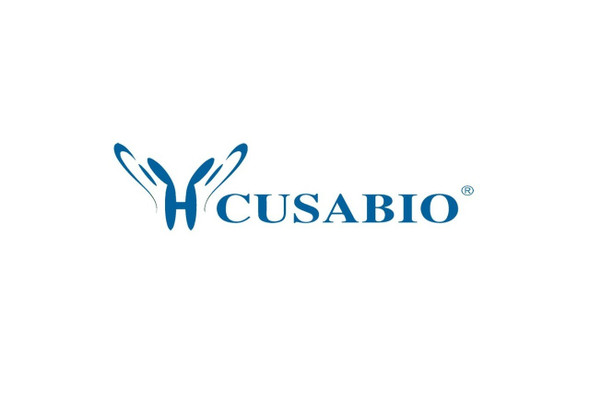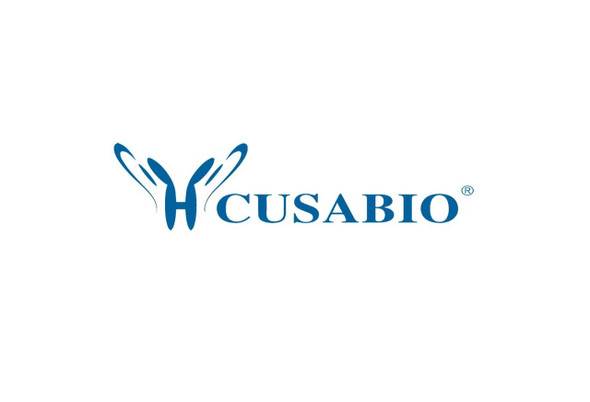Cusabio Human Recombinants
Recombinant Human NAD-dependent protein deacetylase sirtuin-6 (SIRT6) | CSB-EP854057HU
- SKU:
- CSB-EP854057HU
- Availability:
- 3 - 7 Working Days
Description
Recombinant Human NAD-dependent protein deacetylase sirtuin-6 (SIRT6) | CSB-EP854057HU | Cusabio
Alternative Name(s): Regulatory protein SIR2 homolog 6 SIR2-like protein 6
Gene Names: SIRT6
Research Areas: Epigenetics and Nuclear Signaling
Organism: Homo sapiens (Human)
AA Sequence: SVNYAAGLSPYADKGKCGLPEIFDPPEELERKVWELARLVWQSSSVVFHTGAGISTASGIPDFRGPHGVWTMEERGLAPKFDTTFESARPTQTHMALVQLERVGLLRFLVSQNVDGLHVRSGFPRDKLAELHGNMFVEECAKCKTQYVRDTVVGTMGLKATGRLCTVAKARGLRACRGELRDTILDWEDSLPDRDLALADEASRNADLSITLGTSLQIRPSGNLPLATKRRGGRLVIVNLQPTKHDRHADLRIHGYVDEVMTRLMKHLGLEIPAWDGPRVLERALPPLPRPPTPKLEPKEESPTRINGSIPAGPKQEPCAQHNGSEPASPKRERPTSPAPHRPPKRVKAKAVPS
Source: E.coli
Tag Info: N-terminal GST-tagged
Expression Region: 2-355aa
Sequence Info: Full Length of Mature Protein
MW: 66 kDa
Purity: Greater than 90% as determined by SDS-PAGE.
Relevance: NAD-dependent protein deacetylase. Has deacetylase activity towards histone H3K9Ac and H3K56Ac. Modulates acetylation of histone H3 in telomeric chromatin during the S-phase of the cell cycle. Deacetylates histone H3K9Ac at NF-kappa-B target promoters and may down-regulate the expression of a subset of NF-kappa-B target genes. Acts as a corepressor of the transcription factor HIF1A to control the expression of multiple glycolytic genes to regulate glucose homeostasis. Required for genomic stability. Regulates the production of TNF protein. Has a role in the regulation of life span. Deacetylation of nucleosomes interferes with RELA binding to target DNA. May be required for the association of WRN with telomeres during S-phase and for normal telomere maintenance. Required for genomic stability. Required for normal IGF1 serum levels and normal glucose homeostasis. Modulates cellular senescence and apoptosis. On DNA damage, promotes DNA end resection via deacetylation of RBBP8. Has very weak deacetylase activity and can bind NAD+ in the absence of acetylated substrate.
Reference: "Evolutionarily conserved and nonconserved cellular localizations and functions of human SIRT proteins." Michishita E., Park J.Y., Burneskis J.M., Barrett J.C., Horikawa I. Mol. Biol. Cell 16:4623-4635(2005)
Storage: The shelf life is related to many factors, storage state, buffer ingredients, storage temperature and the stability of the protein itself. Generally, the shelf life of liquid form is 6 months at -20?/-80?. The shelf life of lyophilized form is 12 months at -20?/-80?.
Notes: Repeated freezing and thawing is not recommended. Store working aliquots at 4? for up to one week.
Function: NAD-dependent protein deacetylase. Has deacetylase activity towards histone H3K9Ac and H3K56Ac. Modulates acetylation of histone H3 in telomeric chromatin during the S-phase of the cell cycle. Deacetylates histone H3K9Ac at NF-kappa-B target promoters and may down-regulate the expression of a subset of NF-kappa-B target genes. Acts as a corepressor of the transcription factor HIF1A to control the expression of multiple glycolytic genes to regulate glucose homeostasis. Required for genomic stability. Regulates the production of TNF protein. Has a role in the regulation of life span (By similarity). Deacetylation of nucleosomes interferes with RELA binding to target DNA. May be required for the association of WRN with telomeres during S-phase and for normal telomere maintenance. Required for genomic stability. Required for normal IGF1 serum levels and normal glucose homeostasis. Modulates cellular senescence and apoptosis. On DNA damage, promotes DNA end resection via deacetylation of RBBP8. Has very weak deacetylase activity and can bind NAD(+) in the absence of acetylated substrate.
Involvement in disease:
Subcellular Location: Nucleus, nucleoplasm
Protein Families: Sirtuin family, Class IV subfamily
Tissue Specificity:
Paythway: Cellageingandmetabolism
Form: Liquid or Lyophilized powder
Buffer: If the delivery form is liquid, the default storage buffer is Tris/PBS-based buffer, 5%-50% glycerol. If the delivery form is lyophilized powder, the buffer before lyophilization is Tris/PBS-based buffer, 6% Trehalose, pH 8.0.
Reconstitution: We recommend that this vial be briefly centrifuged prior to opening to bring the contents to the bottom. Please reconstitute protein in deionized sterile water to a concentration of 0.1-1.0 mg/mL.We recommend to add 5-50% of glycerol (final concentration) and aliquot for long-term storage at -20?/-80?. Our default final concentration of glycerol is 50%. Customers could use it as reference.
Uniprot ID: Q8N6T7
HGNC Database Link: HGNC
UniGene Database Link: UniGene
KEGG Database Link: KEGG
STRING Database Link: STRING
OMIM Database Link: OMIM









